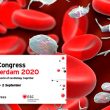You can now relive our virtual event on Coronary Bifurcation Angioplasty in Acute Myocardial Infarction. Coronary Bifurcation Angioplasty in Acute Myocardial Infarction
Should We Start Using OCT in Myocardial Infarction with Non-Obstructive Lesions?
In ST elevation MI, the common assessment methodology continues to the angiography; however, we all know it has certain limitations, especially when it comes to intermediate lesions or coronary dissections. Using imaging, especially high resolution such as OCT, has been looked into by some studies, but never randomized studies. The EROSION III is a randomized...
Survey to Evaluate Myocardial Infarction Reperfusion in LatAm
The Latin American Society of Interventional Cardiology together with the Interamerican Society of Cardiology (SIAC) and the Stent-Save a Life! Initiative have developed a short survey (which can be answered in less than 5 minutes) to learn how ST-segment elevation acute coronary syndromes are treated in Latin America. The final objective of this survey is...
ST Elevation Acute Myocardial Infarction Management in Latin America: A Survey
We are glad to invite the entire Latin American community to make part of this survey aimed at collecting data on the quality of ST elevation MI management in Latin America. It will take just 5 minutes of your time, is totally anonymous, and will contribute to the better understanding of the different treatment realities...
FLOWER-MI: FFR vs. Angiography for Complete Revascularization in Infarction
Functional assessment with fractional flow reserve (FFR) was not better than conventional angiography to guide complete revascularization in patients with multivessel lesions in a setting of ST-segment elevation myocardial infarction and successful primary angioplasty. These results were published in the New England Journal of Medicine (NEJM) and presented during the American College of Cardiology (ACC)...
EuroPCR 2021 | CELEBRATE-02: Novel Glycoprotein IIb/IIIa Inhibitor for ST-Segment Elevation Infarction
Promising fast subcutaneous administration and a quick and potent antiplatelet effect, here comes a novel glycoprotein IIb/IIa inhibitor called RUC-4. This novel drug was tested in the CELEBRATE-02 study, presented at EuroPCR 2021 and simultaneously published in EuroIntervention. The mean platelet inhibition begins 15 minutes after injection and increases with each of the three tested doses...
ST-Segment Elevation Infarction After TAVR: Problems in Every Aspect
For interventional cardiologists, treating an ST-segment elevation infarction in a patient with transcatheter aortic valve replacement (TAVR) is challenging in many ways. Longer door-to-balloon times and higher rates of primary angioplasty failure than in the general population are translated into very high short- and mid-term mortality. This multicenter study, recently published in JACC, included 118 patients...
The Ten Commandments from the New Guidelines on Infarction Without ST-Segment Elevation
In 2020, the European Society of Cardiology guidelines for the management of patients with acute coronary syndromes without ST-segment elevation (Non-ST-Segment Elevation Myocardial Infarction, NSTEMI) were presented. This document went somewhat unnoticed in the context of the COVID-19 pandemic, so this seems a good time to review it and set out some practical “commandments” (something...
TCT 2020 | Ticagrelor Monotherapy After ST-Segment Elevation Infarction
Ticagrelor monotherapy after 3 months of dual antiplatelet therapy in patients who experienced ST-segment elevation infarction significantly reduces major bleeding without increasing ischemic risk. This pre-specified analysis of the TICO study shows that ticagrelor monotherapy is safe even in patients with higher ischemic risk. Interrupting aspirin use after 3 months of dual antiplatelet therapy and continuing treatment...
ESC 2020 | Acute Myocardial Infarction and Anemia: Are Transfusions Necessary?
In anemic patients undergoing acute myocardial infarction, a restrictive transfusion strategy is as safe as a more liberal approach, in addition to saving costs. The cutoff value to decide for a transfusion would be < 8 g/dl hemoglobin. The REALITY outcomes were presented during the virtual ESC 2020 sessions. Anemia is relatively common in patients...









